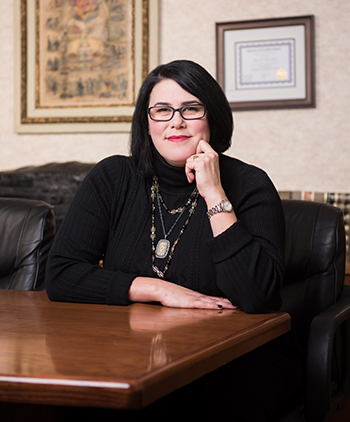3 things every client wants
3 things every client wants

Legacy Consulting LLC • Questar Asset Management
Read full biography below

Investors seek liquidity, asset growth, and a high degree of stability.
With my background in tax and estate matters, I have developed an expertise in several areas, including multi-generational wealth planning, tax issues related to investment planning, and the needs of the elderly. My practice is much broader than that, however, and I work with clients on all types of financial planning and investment needs. No matter how you want to define it, when you talk about retirement planning, estate planning, and life planning, that will cover a pretty broad group of people at some point in their lives!
Two old schools of thought are really not working well today: (1) within this interest rate environment, chasing “safe” yield is not an attractive proposition, and (2) the days of buy-and-hold pure mutual fund investing have really gone out the window with the drastic declines we have seen twice in the last fifteen years.
I frequently attend financial conferences and, frankly, you tend to meet the same type of people there—very nice and professional, but more or less all saying the same thing, focused on sales, and not bringing a lot of new investment thinking to the table.
Then I went to one specific conference and happened to sit at a table with—what I will politely call—some different types of people, who were obviously very intellectual and not salespeople at all. They talked about their models and algorithms, and a different approach to money management based on trend following and taking emotion out of investment decision-making.
Given my father’s engineering background and my quantitative orientation—I am a numbers geek—I could not wait to learn more. I was fascinated with the theory, software, and models behind this form of active money management.
 One of the things I say in my client meetings is that everybody wants three things out of an investment: they want it to be completely liquid, they want their assets to grow, and they want a high degree of safety or stability. There is no such thing as an investment strategy that will provide an absolute guarantee on all three of those factors. But I explain to clients that I believe an actively managed portfolio can deliver a nice balance between all three.
One of the things I say in my client meetings is that everybody wants three things out of an investment: they want it to be completely liquid, they want their assets to grow, and they want a high degree of safety or stability. There is no such thing as an investment strategy that will provide an absolute guarantee on all three of those factors. But I explain to clients that I believe an actively managed portfolio can deliver a nice balance between all three.
I like to fully educate clients as to the theory behind active money management, without getting overly technical. It has been a successful process since just about all of the long-term growth assets of my clients are in managed money strategies.
I explain that this is a quantitative approach, not dependent upon a manager’s personal beliefs about the markets or economy. I like to say that this kind of software can crunch more numbers on more market factors in minutes than a room full of humans can do in a month. And this is not some high-frequency trading approach—the managed portfolios might trade, on average, somewhere between 10 and 30 times a year.
The algorithms can do any number of things, but to keep it simple for clients, I explain that the analysis is continuous, covers asset classes around the globe, and determines what the trends are for various asset classes, sectors, and sub-sectors. Then, it will determine the appropriate allocations based on what is happening in the market: strategies can shift weightings in sectors, move in and out of asset classes and sectors, go to cash or higher or lower overall exposure, and even use leveraged products or inverse strategies when trends are going south.
But the key point is what I was saying originally about liquidity, growth, and stability. These strategies use very liquid investments and have a high degree of risk management built in. And on the asset growth front, I like to provide clients with an analysis of how a managed strategy may have performed over the past 15 or 20 years versus a buy-and-hold S&P 500-type strategy. Of course, there are all the caveats on past performance, but clients understand that by trying to minimize the effect of big market down years, the overall approach should work far better for them over the long haul.
The key here is the client education. I have built my business on the ability to communicate effectively. That is a two-way street in terms of really trying to listen to clients, understanding their needs, and then in providing the solutions that are appropriate for their situation. I think active money management can play an important role for many clients, and I work hard to give clients the understanding to make their own informed investment decisions.
 Megan Avery and her team work closely with clients to help make sense of today’s complex tax, estate, income, and retirement planning options. Legacy Consulting LLC, where she is president, was established in 1998 and offers securities through Questar Capital Corporation (QCC).
Megan Avery and her team work closely with clients to help make sense of today’s complex tax, estate, income, and retirement planning options. Legacy Consulting LLC, where she is president, was established in 1998 and offers securities through Questar Capital Corporation (QCC).
Ms. Avery received her Chartered Financial Consultant designation from The American College of Financial Services, and has continued her education by completing courses from both the American Academy of Estate Planning Attorneys and The American College. Her professional career has focused on tax, estate, retirement, and income planning, and she holds a number of financial licenses.
A frequent public speaker at financial events and forums, she also has appeared often in the local media in the Maryland area. She has been recognized through a number of awards and honors, including being featured in Smart Women Magazine’s Bravo! Entrepreneur Award. Ms. Avery is a member of Daughters of the American Revolution, as well as other nationally recognized organizations.
Ms. Avery is active in several charities, including Baltimore Magazine’s Women in Business fundraiser, which benefits the Susan G. Komen Foundation. She lives with her son in the country, adopting a “homesteading” lifestyle as much as possible. She is a wine enthusiast, making her own wine and living among over 100 fruit-producing trees.
Disclosure: Securities offered through Questar Capital Corporation (QCC), Member FINRA, SIPC. Advisory Services offered through Questar Asset Management (QAM), a Registered Investment Advisor. Legacy Consulting LLC is independent of QCC and QAM.
Post-publication note: As of this update (Aug. 30, 2021), Ms. Avery is registered with LPL Financial LLC.
Photography by Mike Morgan

